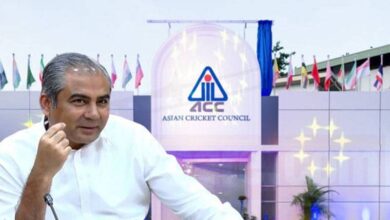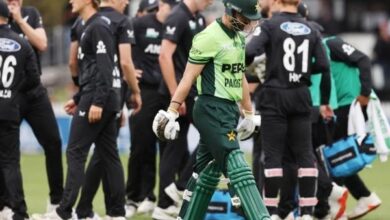Haroon Rashid highlights new structure’s positives


Karachi:Central Punjab were crowned Quaid-e-Azam Trophy first-class 2019-20 champions following their resounding innings win over Northern at the National Stadium, Karachi on Monday.
The revamped tournament that included six Cricket Association sides produced some top-class cricket that gave real context to domestic cricket. Both red-ball and white-ball events earned recognition and eyeballs like never before.
A total of 31 matches were played in the first-class Quaid-e-Azam trophy as quality over quantity of cricket was ensured in a supremely competitive environment. The tournament was played on home and away basis with new innovations like no-toss rule and the second elevens adding to the flavour.
In an unprecedented move, a total of 10 matches were streamed live on PCB YouTube channel while the final was broadcast live on PTV Sports and Ten Sports.
The three-day non first-class Quaid-e-Azam Trophy ran concurrently to the four-day tournament with Southern Punjab winning the tournament.
Besides the Quaid-e-Azam Trophy, first and second XI National T20 tournament was played in Faisalabad and Karachi, respectively. In an action-packed month of October, Northern completed a double when they won both the Faisalabad and Karachi events, defeating Balochistan at the Iqbal Stadium and Southern Punjab at the National Stadium.
The Faisalabad event was participated by country’s all the top players and televised live by Ten Sports as the PCB continued to invest in its domestic cricket.
The National U19 one-day and three-day tournaments were also held in October-November and both the competitions were won by Sindh.
The 2019-20 season will conclude with the Pakistan Cup 50-over tournament that will be from 25 March to 19 April.
PCB Director – Domestic Cricket Haroon Rasheed, reviewing domestic matches played in 2019, said: “The new constitution was approved on 19 August and within a short span of time all stakeholders worked very hard to implement the new domestic structure.
“The new structure has provided us a lot of positives, the quality of cricket has improved considerably with teams fighting till the very end to reach the Quaid-e-Azam trophy final for instance.
“The concept of first and second eleven was to make all 32 players eligible for first-class cricket with players relegated or promoted to both tiers depending on their performances and we saw many players coming to the first-class level from second eleven tournament and making a big mark.
“Likewise, the no-toss rule was very well received. We introduced home and away games this season and despite the majority of the tournament being played in Karachi, teams were equally given a share of home and away games in a bid to neutralize undue pitch or conditions advantage which used to be an issue in the seasons gone-by.”
“Since the majority of international cricket is played with the Kookaburra ball we decided to use the ball this season. For the last couple of seasons we were using Dukes which have a far more pronounced seam compared to the Kookaburras. The Dukes provided bowlers extra seam and bounce especially on sporting pitches, whereas with the Kookaburras the bowlers didn’t get any extra advantage due to its flatter seam.
“This season the pitches were more or less the same but due to the change in ball we saw batsmen prosper while the spinners also came into play as they bowled longer spells as fast bowlers remained less effective especially 20th over onwards in the Quaid-e-Azam Trophy.
“This season the batsmen prospered and we saw some big innings, the spinners topped the wicket-takers list as they got to bowl long spells an aspect that had been missing with the Dukes ball in the seasons gone by.
“Meanwhile, we have identified various areas where we can improve in the season ahead. All stakeholders including captains and coaches of the six teams will be invited for an end of season de-brief where the shortcomings will be identified and plans for the new season will be made.”




